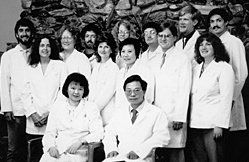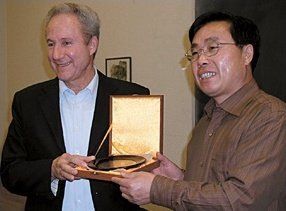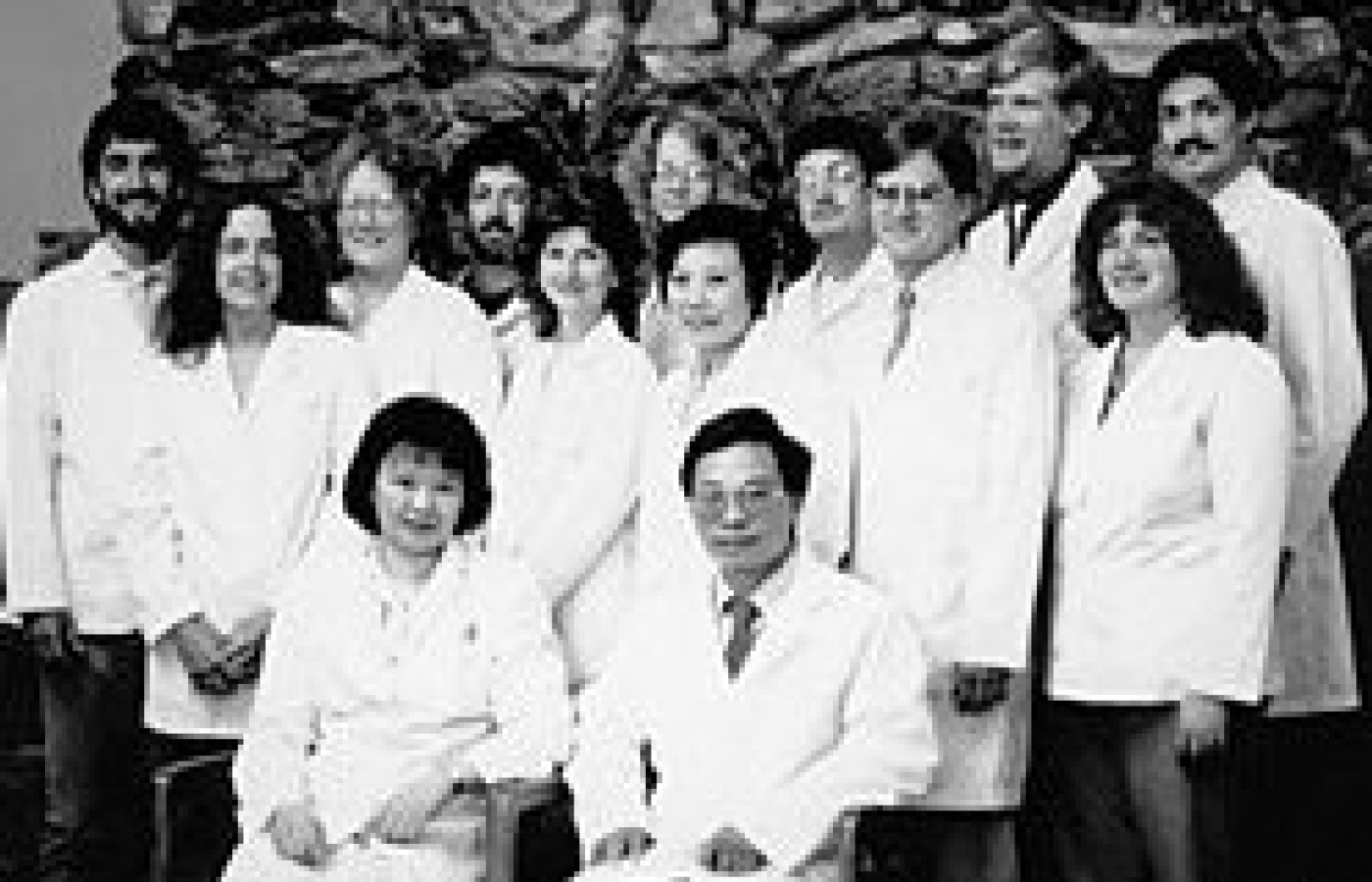People today want convenience, whether it be from their bank, credit card, favorite retail store, or restaurant. They demand it from the companies who hold their loyalty, including their health care providers (you). They don’t want to call and possibly be put on hold, and they want to use an app or schedule an appointment on your website. Here are three reasons your practice can gain by switching to online appointment scheduling.
Five Branches Institute Celebrates its 20th Anniversary
Ron Zaidman, the president and chief executive officer of Five Branches Institute, has an interesting perspective on the way the perception of Chinese medicine has changed over the years. "Twenty to 30 years ago Chinese medicine was viewed as being way out there, very esoteric. Now it is commonplace," he said.
Mr. Zaidman knows whereof he speaks. In addition to being Five Branches' president and CEO, he's also one of the institute's co-founders. Located in Santa Cruz, Calif., Five Branches will be celebrating its 20th anniversary this year. Over the past 20 years, Mr. Zaidman and his colleagues have witnessed a tremendous flowering of interest in traditional Chinese medicine (TCM), and are gratified to see its increasing acceptance into mainstream Western medicine. The institute, and its faculty, staff and students, have played a significant role in that integration.

In celebration of the school's anniversary, I asked Mr. Zaidman a series of questions about the past two decades at Five Branches, and what the future holds for both the school and the profession.
KR: What were your goals when you first started the college? Have you attained all of them, or are there still some things you'd like to accomplish?
RZ: The history of Five Branches started with meeting several extraordinary, yet humble, practitioners of traditional Chinese medicine. We honor and thank them as the grandfathers of Five Branches - Ken Pang, LAc, of Palo Alto, and Tin Lui, LAc, of Oakland. Our goals from the beginning were to invite practitioners of their caliber to teach and transmit their precious knowledge and skills to the West, their subtle yet powerful ways of practicing medicine, and of caring.
The essence of our success since our beginning has been the quality of our faculty, and remains so to this day. Jeffrey Pang, LAc, Joanna Zhao, LAc, Sharon Feng, LAc, and Lucy Hu, LAc, have been with us for 18 to 20 years. Richard Liao, LAc, Richard Shwery, LAc, and Shao Hua Li, LAc, taught for over 10 years. Today, our faculty number over 45 distinguished members.
To attain our goals of offering TCM education, training and healthcare at the highest level, we have a few structures and programs we need to put into place. These include the establishment of our doctoral program; a research center; the opening of our residency programs for specialized and general postgraduate clinical training; and the opening of new campuses to provide TCM education in underserved communities.
KR: Compare what Five Branches was like 20 years ago to what it's like today. How has it changed? How has it stayed the same?

RZ: Our school was founded on an auspicious day - Feb. 4, 1984, on Chinese New Year, in the Year of the Mouse, at the beginning of a 60-year cycle. We had one classroom, a clinic with three treatment rooms, five teachers, 18 dedicated students, one patient a day, and one typewriter. Today we have five classrooms, 22 treatment rooms, 45 teachers, 200 dedicated students, 22 computers and various classroom electronics, and we see 100 patients a day. We have grown. Besides the master's degree in traditional Chinese medicine, we offer various specialized certificate programs, such as medical qigong and sports medicine. What remains the same is the quality of teaching in both the classroom and the clinic, and the success of our students. Our early high (often 100 percent) passing rate in the state licensing exams still occurs on a consistent basis. What remains the same is the deep and sincere dedication of the faculty, students, staff and our board to the transmission of this incredible medicine and its values.
KR: What are your fondest memories of the school and the time you've spent at the institute?
RZ: My fondest memories remain the hug and warm smile that a patient gives one of our faculty when they meet in our friendly downtown, and the faculty member later shares with me how Chinese medicine saved the patient's life. And the heartfelt gratitude expressed by our graduates at our graduations for the gifts received during their time of study and training at Five Branches.
| Five Branches Institute Timeline First Five Years (1984 - 1988)
Second Five Years (1989 - 1993)
Third Five Years (1994 - 1998)
Last Five Years (1999 - 2003)
Current (2004 - )
|
KR: Where do you see Five Branches 20 years from now?
RZ: Five Branches will be in new places in much less than 20 years.
I foresee Five Branches moving in two directions. First, the continued in-depth development of TCM education and healthcare through our master's program, the development of both the present doctoral, the future entry-level doctoral, residency clinics and certificate programs. It is our knowledge of Chinese diagnosis, herbal formulas and acupuncture (and tuina, qigong and taiji) that offers the highest level of healthcare to our patients, to America, and the Western world.
Secondly, we will continue to increase our level of education and training in Western medicine. This allows us to offer better healthcare, and to be part of a system of integrated healthcare and medicine. Both are necessary, and we are clear that TCM is the root.
I see four trends influencing where Five Branches will be within the next 20 years. First, the interest of TCM universities in China and experts in the U.S. to share their expertise in TCM will continue to offer us important program and teaching resources. These are vital for the development of our doctoral programs and research.
Second, more and more patients will continue to learn about and seek highly qualified TCM practitioners. Our work is to continually improve our programs to provide the best educated and trained practitioners.
Third, other healthcare professions and institutions will continue to discover the depth and efficacy of this medicine, resulting in greater cooperation among medical professionals and medical schools.
And lastly, both patients and healthcare providers will continue to understand the advantages of integrated medicine: the availability of a wide spectrum of healthcare modalities to both enhance health, and to diagnose and treat diseases and disharmonies.

In the next 20 years, Five Branches will evolve into an international university, teaching high-level TCM education in English, both in the U.S. and worldwide. We will offer TCM healthcare in an integrated medicine environment, including both outpatient and inpatient care. This high level of healthcare will be offered in a supportive and humanistic environment, reflecting, as a leading medical doctor at Stanford recently highlighted to me, simple kindness and caring.
KR: Any final thoughts or comments you'd like to add?
RZ: I believe we are very privileged to have acupuncture and Oriental medicine healthcare and education at such high levels in the U.S. I would like to express my gratitude to the pioneers that worked so hard over the last 40 years to get us to where we are today, and to those that continue to contribute so that we may work together in the transmission of this precious knowledge and medicine to the West at the highest levels possible.
Editor's note: Five Branches Institute will be hosting a 20th anniversary benefit concert on Friday, May 28th in Santa Cruz. See www.fivebranches.edu or call (831) 476-9424 for more information.



